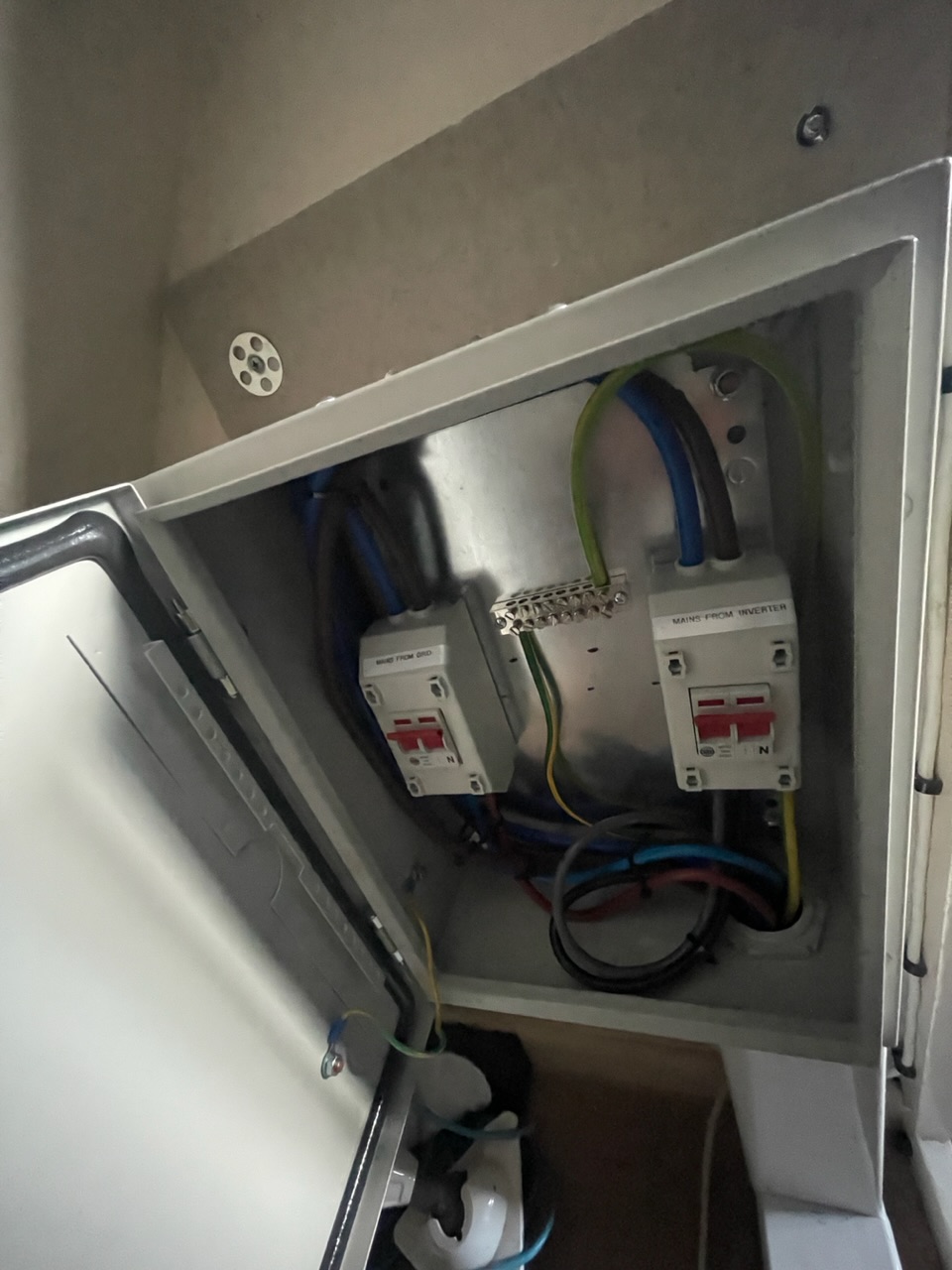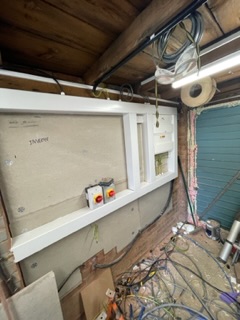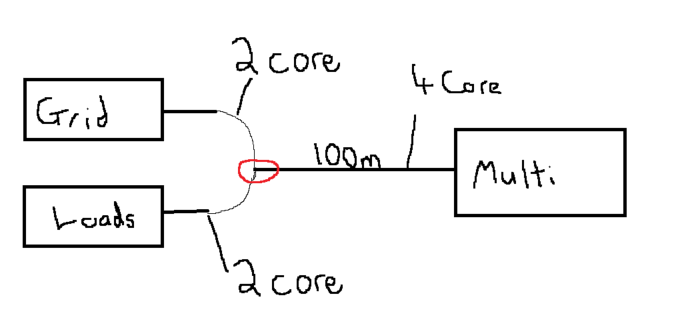Hi Folks,
Working on plans for expansions to a solar installation and it's a little tricky. The installation location is 100m from grid input and majority of the loads.
ie grid -> 100m -> 2x multiplus -> 100m -> loads.
but grid -> majority of load = 2meters....
And automatic switchover if grid failure or vice versa if batteries at 0 SoC is required.
Question:
1. Voltage drop: I see people talk of voltage drop being a concern, When people say concern is it just the voltage being too low for devices to operate properly/higher current drawn? If so to reduce concern on run from multiplus -> loads I could just increase the output voltage right? Are there any other "Concerns" in regards to voltage drop I should be factoring in?
2. System design/wire runs: The run from Grid to Multi and back to loads could be 200m on passthrough in the event batteries are empty. (My plan is to minimise impact of this was by using grid to charge batteries when below x SoC so that it's rarely pure passthrough and more often than not the grid charges batteries and then gets inverted to the slight the higher voltage say 245/250 ish). Is there a better solution?
I was also thinking maybe a configuration with an auto transfer switch or anti-islanding device might be better to cut out the 200m but struggling to think of a clean way of configuring that with the multiplus. Anyone had similar experience with setups like this/got any nice solutions that I'm missing?
Would it be something like?
grid -> ACIN multiplus -> ACOUT to ATS -> loads
grid -> ATS -> Loads
Don't know why but this just feels to add more complexity.... Not sure if instead I'm over thinking the issue of the run length, and maybe i just round up on conductor size and live with it?

 No 5core on a single phase, I had to return the earth rod earth to the house as the house didn’t have the DNO one anymore, I’m doing the whole house critical load. And my run is max 10meters. My system is a work in progress I’ve just finished the wiring for the house and garage in preparation for inverter DNO got to attend to change the Fuse for 100amp.
No 5core on a single phase, I had to return the earth rod earth to the house as the house didn’t have the DNO one anymore, I’m doing the whole house critical load. And my run is max 10meters. My system is a work in progress I’ve just finished the wiring for the house and garage in preparation for inverter DNO got to attend to change the Fuse for 100amp.
